In a world where smart devices are taking over everything from fridges to fitness trackers, open-source IoT platforms are the unsung heroes of this tech revolution. They offer a playground for innovators and hobbyists alike, allowing anyone with a spark of creativity to build and customize their own Internet of Things solutions. Forget the corporate giants—it’s time to unleash the power of collaboration and community!
Table of Contents
ToggleOverview of Open-Source IoT Platforms
Open-source IoT platforms play a crucial role in the development of smart devices. These platforms provide extensive flexibility for innovators and hobbyists to customize solutions based on specific needs. Through open-source software, users can access and modify code, enabling tailored applications that serve various industries, including healthcare and agriculture.
Prominent examples include Arduino, which offers a user-friendly interface for electronic projects, and Raspberry Pi, known for its versatility in a wide range of IoT applications. Both platforms foster a strong community that contributes to ongoing enhancements and support. Such collaboration reduces barriers to entry, making technology accessible to newcomers and seasoned developers alike.
Security represents a significant concern in IoT systems. Open-source platforms often prioritize transparent security measures, allowing users to examine and improve code. Additional projects like ThingsBoard and Kaa offer built-in monitoring features, helping users manage devices and data efficiently.
Integration capabilities stand out in open-source ecosystems. Platforms frequently support various protocols, such as MQTT and HTTP, ensuring seamless communication between devices. Developers frequently utilize libraries and plugins to extend functionalities, allowing for interoperability across different devices and services.
Community-driven efforts result in continuous development and updates. Users contribute to enhancement discussions, fostering innovation and addressing emerging challenges. As a result, open-source IoT platforms often remain at the cutting edge of technological advancements.
Open-source models can lower costs associated with proprietary systems, thus democratizing access to IoT technologies. Organizations prioritize adopting these platforms due to their scalability and adaptability in addressing changing market demands.
Benefits of Open-Source IoT Platforms
Open-source IoT platforms offer numerous advantages that enhance their appeal to developers and organizations. Key benefits include cost efficiency and flexibility in customization.
Cost Efficiency
Cost efficiency stands out as a significant advantage of open-source IoT platforms. Compared to proprietary systems, open-source options typically incur lower licensing fees. Organizations can allocate these savings to other critical areas, such as development and deployment. With community contributions driving enhancements, users also benefit from continuous improvements without incurring extra costs. Reports indicate that implementing open-source solutions can reduce overhead by as much as 20-30%. Thus, organizations can adopt IoT technologies without stretching their budgets.
Flexibility and Customization
Flexibility and customization define the capabilities of open-source IoT platforms. Developers can modify source code to meet specific requirements, enabling tailored solutions for diverse applications. This adaptability facilitates integration with existing systems or enhancements that align with evolving technologies. Communities around platforms like Arduino and Raspberry Pi actively share enhancements, ensuring users access the latest features and improvements. As a result, the tailored approach not only meets unique business needs but fosters innovation. Open-source environments encourage experimentation, allowing developers to innovate without restraint.
Popular Open-Source IoT Platforms
Open-source IoT platforms offer powerful solutions for developing smart technologies. They provide vital tools for makers and professionals alike, enhancing collaboration within user communities.
Platform A: Features and Capabilities
Arduino stands out for its versatility and user-friendliness. Various hardware options and extensive libraries support diverse projects, from simple sensors to complex automation systems. Efficiency comes from its extensive support for multiple programming languages, enabling developers to choose their preferred coding approach. Compatibility with a vast array of shields and sensors allows extensive customization. Security features integrate seamlessly into the platform, boosting user confidence in deploying IoT solutions.
Platform B: Use Cases and Applications
Raspberry Pi serves numerous applications across industries. Smart home systems often find a home with Raspberry Pi, integrating devices for straightforward control. Educational institutions leverage it for teaching programming and IoT concepts, fostering innovation among students. Remote monitoring in agriculture uses Raspberry Pi to collect data on soil conditions and crop health, enhancing productivity. Open-source software enables countless projects, allowing users to explore novel usages tailored to specific needs.
Platform C: Community and Support
Kaa provides a robust community-focused environment. Developers share insights and resources, fostering collaborative problem-solving. The platform’s documentation ensures accessibility for users at all skill levels, allowing quick onboarding. Community forums buzz with activity as users exchange tips and enhancements, driving continuous platform evolution. Frequent updates from contributors keep the platform aligned with the latest technological advancements, encouraging sustained engagement and support.
Comparison of Open-Source IoT Platforms
Open-source IoT platforms differ significantly in performance and security. Understanding these differences helps users select the most suitable option for their projects.
Performance Metrics
Performance metrics often vary across platforms. Arduino excels in low-power applications, making it ideal for energy-efficient devices. Raspberry Pi offers higher processing power, catering to projects requiring extensive data processing. Latency and throughput are critical considerations; both platforms report minimal latency, facilitating real-time application development. Community feedback emphasizes the ability of these platforms to support a wide range of devices and protocols. They continuously improve and adapt through community contributions, ensuring that performance remains competitive with proprietary solutions.
Security Considerations
Security considerations in open-source IoT platforms are paramount. Platforms like ThingsBoard provide built-in security features, ensuring that user data is protected. Transparency in code allows developers to identify vulnerabilities and implement patches swiftly. Regular updates contribute to enhanced security, minimizing potential threats. Community involvement promotes proactive security measures, as users share insights and best practices. Kaa’s community-driven model reflects this focus, empowering users to monitor their devices effectively. Adopting these platforms can lead to improved security outcomes compared to traditional proprietary systems.
Conclusion
Open-source IoT platforms are transforming the landscape of smart device development. They empower users to innovate and customize solutions tailored to their specific needs. The collaborative nature of these platforms fosters a vibrant community that drives continuous improvement and security enhancements.
By prioritizing transparency and community engagement, open-source options not only lower costs but also increase accessibility for organizations. This adaptability encourages experimentation and innovation, enabling developers to push the boundaries of what’s possible in IoT technology.
As the demand for smart devices grows, embracing open-source IoT platforms will likely be a key strategy for businesses looking to remain competitive and responsive to market changes.




